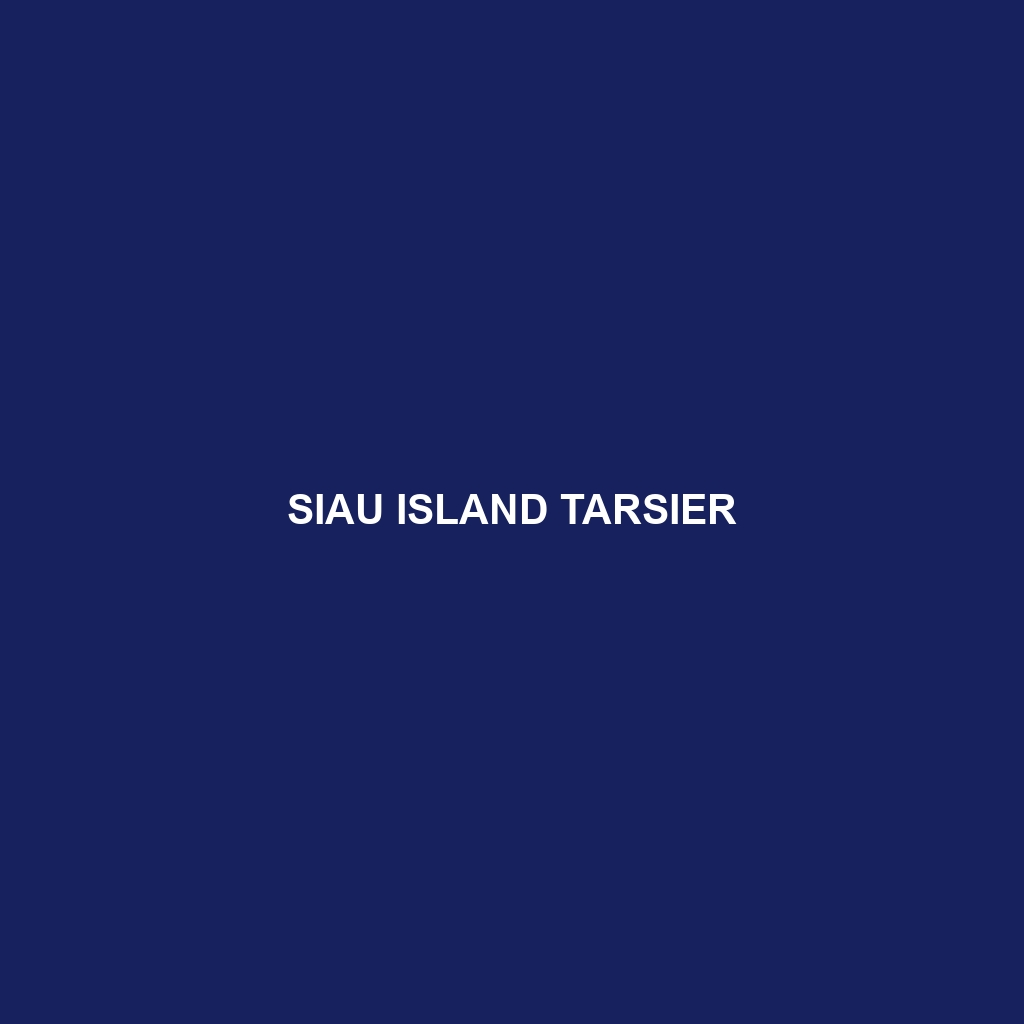Siau Island Tarsier
Common Name: Siau Island Tarsier
Scientific Name: Tarsius tumpara
Habitat: The Siau Island Tarsier is primarily found in the lush rainforests of Siau Island, which is part of Indonesia’s North Sulawesi province. This species thrives in tropical forests characterized by dense vegetation and high humidity levels, often residing in areas with a canopy cover that provides ample shelter and foraging opportunities. Its restricted geographic range highlights the species’ dependence on this specific habitat.
Physical Characteristics: The Siau Island Tarsier is a small primate, measuring about 10 to 15 centimeters (4 to 6 inches) in body length, excluding its long tail, which can be two to three times its body length. This tarsier is known for its large, expressive eyes that enable excellent night vision, a light brown to gray fur color that blends seamlessly with its forest surroundings, and its distinctive elongated fingers and toes, which aid in climbing and grasping. Notably, it has a round head and a flat face, contributing to its unique appearance and adept nocturnal lifestyle.
Behavior: Siau Island Tarsiers are nocturnal creatures, exhibiting a range of fascinating behaviors. They are primarily arboreal, spending most of their time in trees where they are skilled at leaping between branches. Socially, they are known to be solitary or live in small family groups. Their communication includes a variety of vocalizations, and they use their keen hearing to detect prey and respond to the sounds of their environment. This species displays remarkable agility and is known for its ability to rotate its head nearly 180 degrees to survey its surroundings.
Diet: The diet of the Siau Island Tarsier mainly consists of insects, small vertebrates, and other invertebrates, with a particular preference for crickets and moths. Its hunting technique involves remarkable agility and quick reflexes, allowing it to catch prey mid-air. This species is an important nocturnal predator in its ecosystem, contributing to controlling insect populations and maintaining biodiversity within its habitat.
Reproduction: The Siau Island Tarsier typically breeds once or twice a year. Breeding season is influenced by environmental factors such as food availability. After a gestation period of approximately six to seven weeks, female tarsiers give birth to a single offspring, which is vulnerable at birth but quickly develops independence. Parental care is crucial during the early weeks, as the mother provides warmth and protection while teaching the young to forage.
Conservation Status: The Siau Island Tarsier is currently classified as endangered by the IUCN Red List. Its population is threatened primarily due to habitat destruction caused by deforestation, agriculture, and logging activities. The specific range of this species makes it particularly vulnerable to environmental changes and loss of habitat.
Interesting Facts: One of the most intriguing aspects of the Siau Island Tarsier is its ability to leap up to 12 feet (3.6 meters) in a single bound, making it one of the most agile primates. Additionally, unlike many other primates, tarsiers do not have a reflective tapetum layer in their eyes, allowing them to excel in low-light conditions without the glare associated with some nocturnal animals.
Role in Ecosystem: The Siau Island Tarsier plays a critical role in its ecosystem as both a predator and prey. By controlling insect populations, it helps maintain ecological balance within the rainforest. Additionally, as a prey species for larger mammals and birds of prey, it supports the food web, illustrating its importance in the biodiversity of Siau Island’s rainforests.
